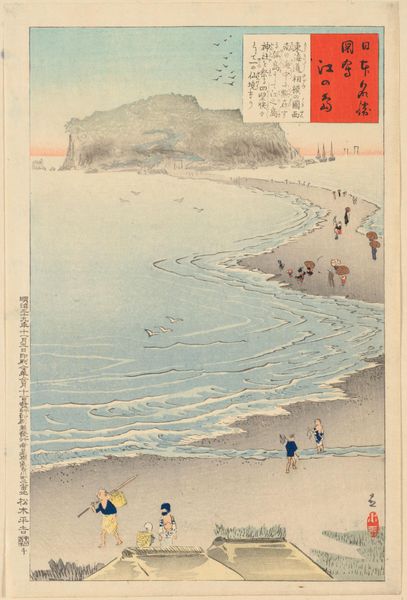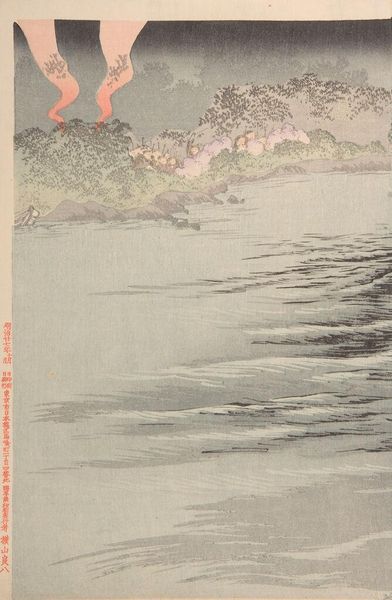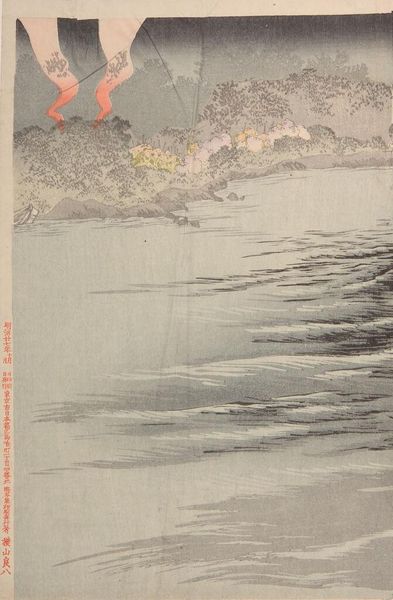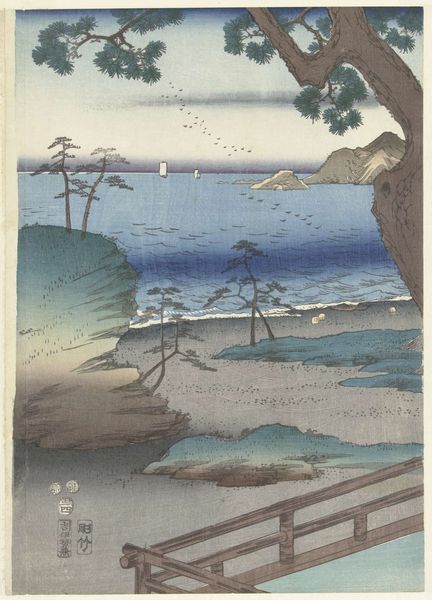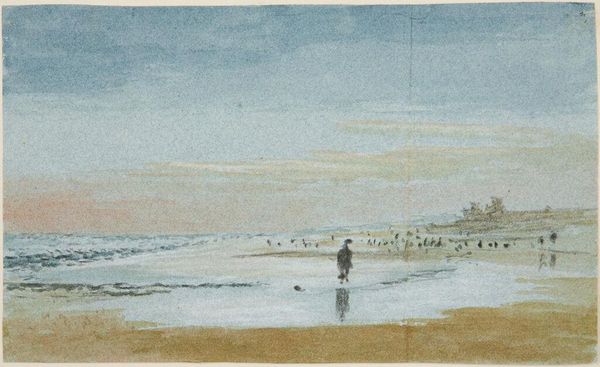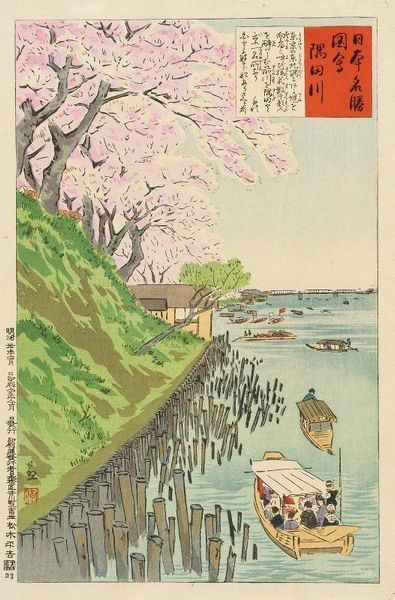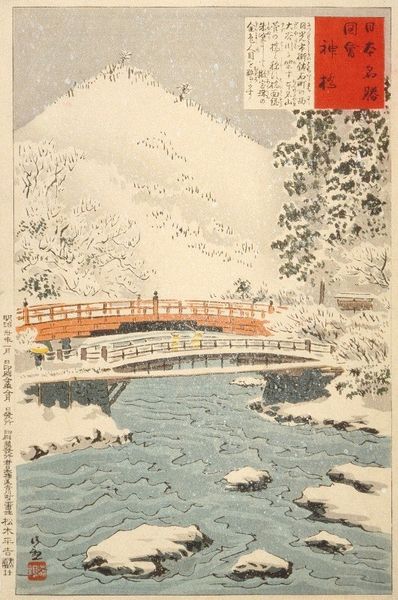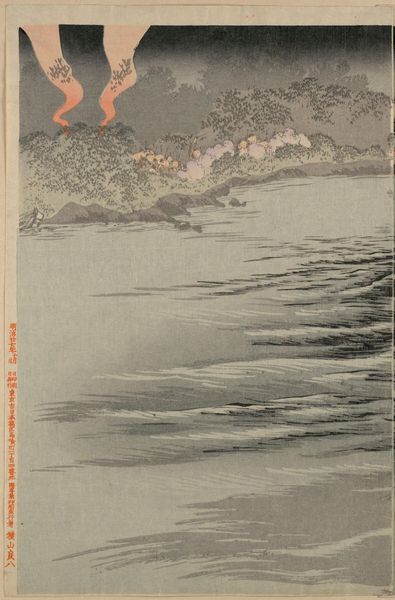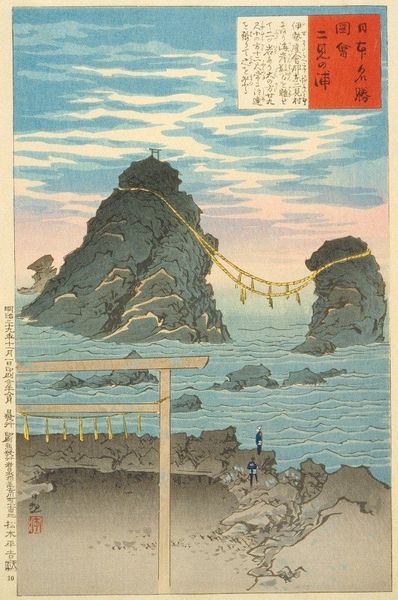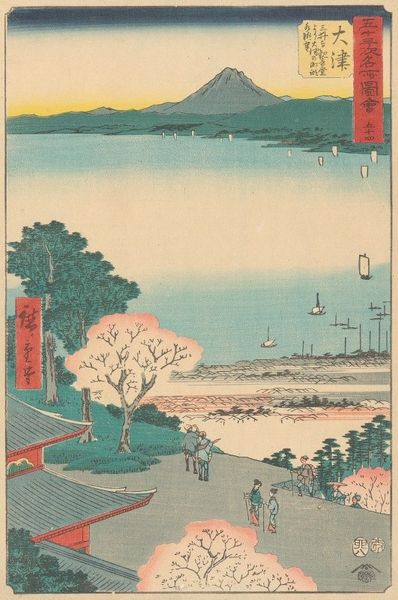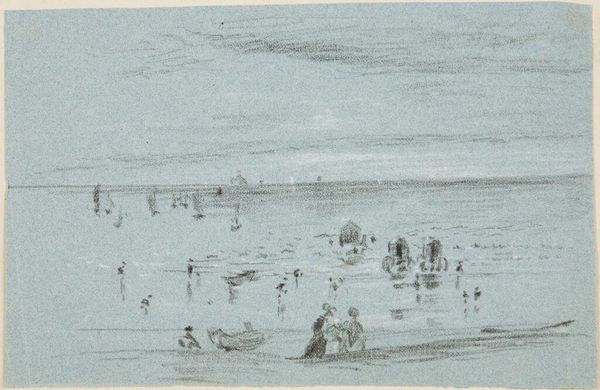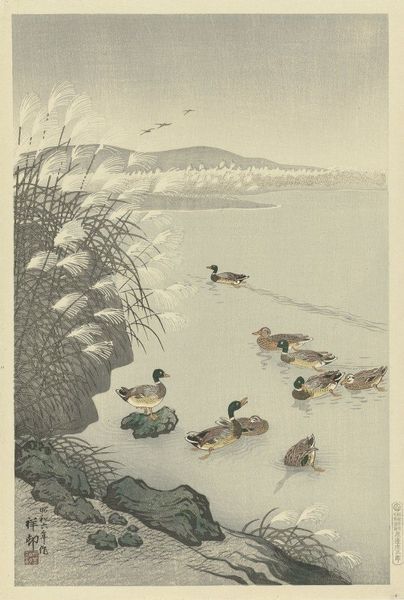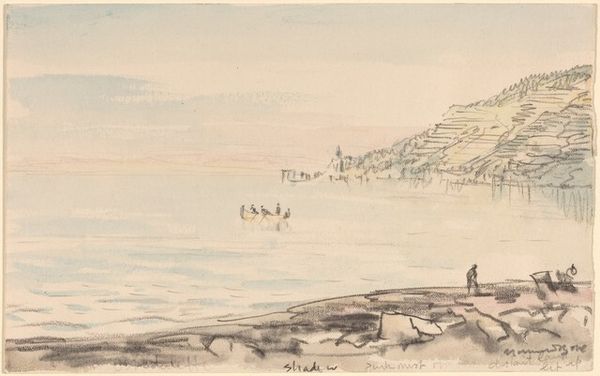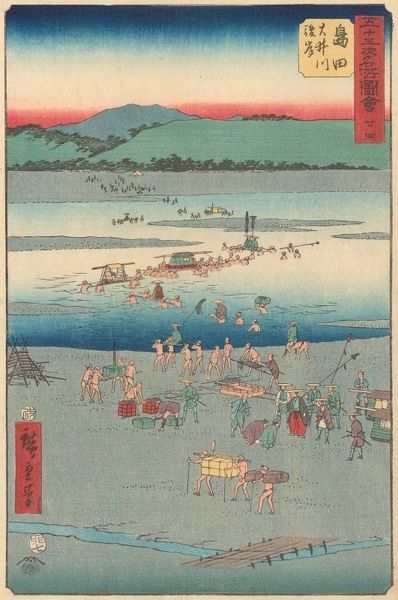
Copyright: Public Domain: Artvee
Curator: Looking at Kiyochika's "The Island Enoshima," created around 1896 using the woodblock print technique, I am immediately struck by the receding lines of the shore and the atmospheric gradation of blues in the sea and sky. Editor: It's undeniably serene, yet something about the regimented placement of figures makes me think about the labor that sustained these scenic spots, perhaps the work of fishermen, vendors, or even pilgrims traveling along the coast. I wonder about their daily routines within this pretty view. Curator: You point to an interesting tension. There's a careful structure here—observe the composition created through the placement of the island, and the contrast between the calm sea and active shore. Editor: And it makes me think about the materials, woodblocks carefully carved, pigment laboriously mixed. Prints like this weren't just aesthetic objects; they were commodities, reflecting the rapid commercialization and accessibility of art in Meiji-era Japan, making the scene more accessible for everyone. Curator: Absolutely, the linear quality achieved through woodblock is essential here; see how Kiyochika captured light? Note his careful use of color, for example: he depicts the birds and figures as dark and small in relationship to the broad sand and horizon, and the figures grow progressively larger as the shore draws close to the viewer. Editor: And Kiyochika, trained in Western-style painting, brings in realistic light to contrast older Ukiyo-e styles. His fusion of styles tells us a great deal about artistic and social exchanges at the time, the shifts in cultural consumption and artistic production during that time, wouldn't you agree? Curator: Most definitely, the layering and combination of techniques makes the print stand out among its contemporaries, offering insight into a world on the cusp of change. Editor: Right, and perhaps how consumer culture changed how laborers interacted with landscapes as tourist destinations. I’m still struck by the interplay between the beautiful and the banal. It is lovely to consider. Curator: A beautiful meditation on art history and craft.
Comments
No comments
Be the first to comment and join the conversation on the ultimate creative platform.
